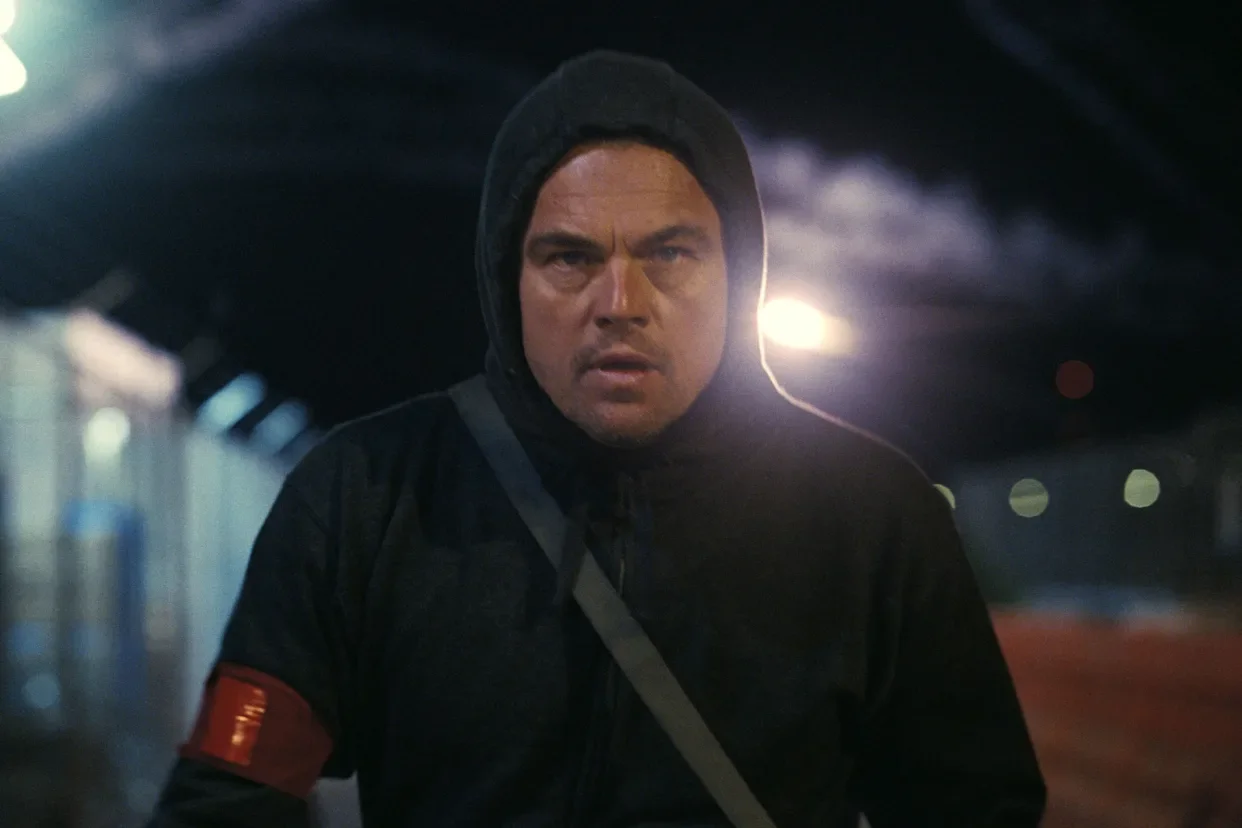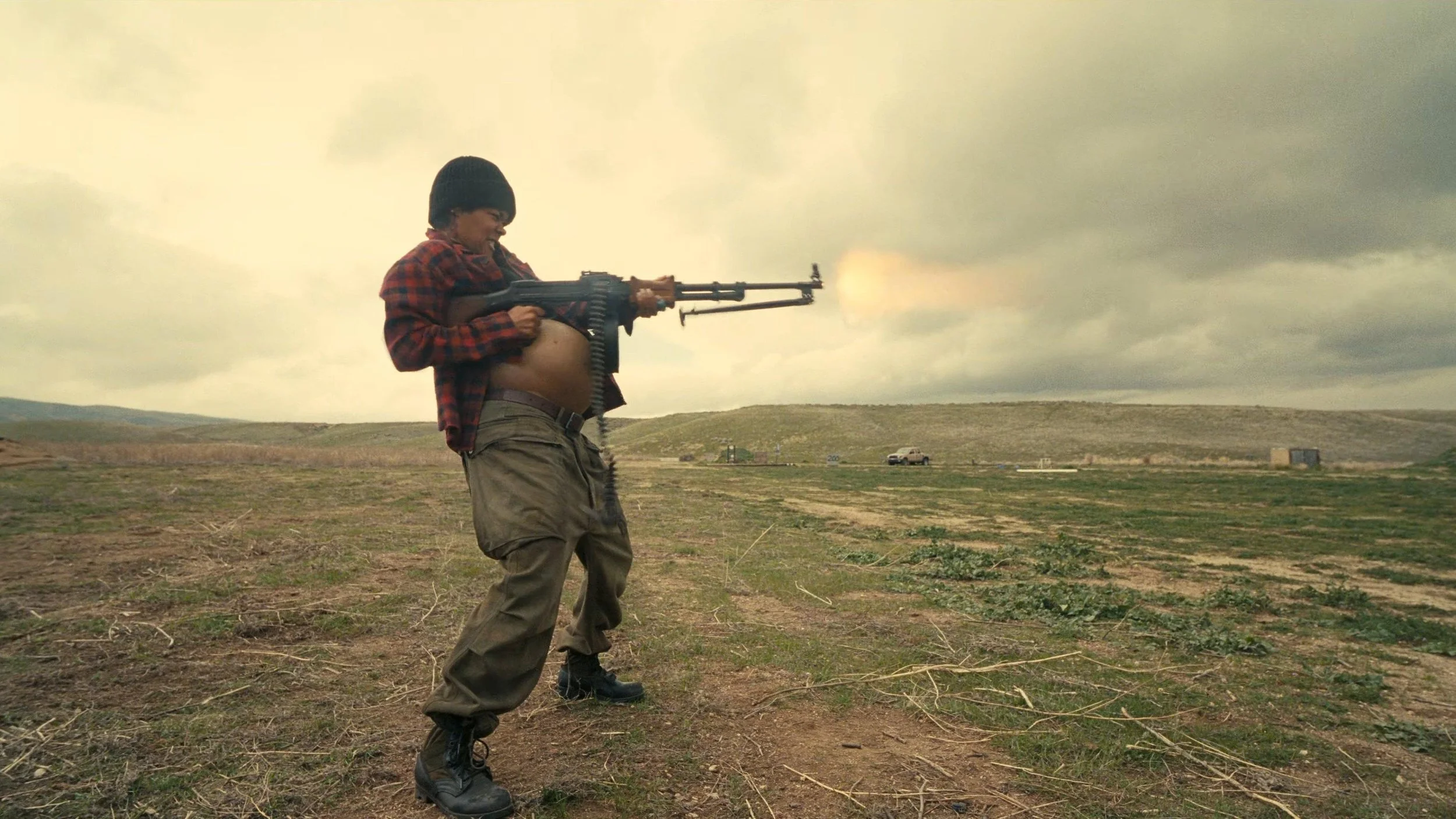One Format After Another
In late September, Warner Bros. released Paul Thomas Anderson’s One Battle After Another, their second movie of the year to be projected on film in theaters. This release was really unique because Anderson shot One Battle in VistaVision, a camera system that hasn’t been widely used since the 1960s. It’s the latest film format to make a comeback in an era where the studios and cinema owners are having a hard time getting audiences to come see just a normal digital presentation. While One Battle may be exiting premium screens this week to make way for Tron: Ares, you should get out and see it on film if you can. Film projection, no matter which format you see it in, will always look better than a movie shot digitally. Film has distinctive organic aesthetics that a digital camera cannot achieve on its own.
One such aesthetic is grain, tiny crystals that capture the light and compose the images you see. Film renders colors differently, and more dynamically because it requires more light to expose correctly. And while film projection can be affected by human error — prints can get damaged, tiny dustballs inside the projector can get caught and blown up to 1,000 times their size on the screen — it makes seeing a movie on film all that more special and a one-of-a-kind experience. It’s old fashioned and romantic and worth your time. One Battle After Another was shown in three different film formats: 35 mm VistaVision, standard 70 mm, and IMAX 70 mm. Being a fan of PTA’s work, a film photographer and cinephile, I knew I had to make a pilgrimage to experience One Battle them all, one format after another.
Ever since Christopher Nolan devised a way to use IMAX film cameras to shoot parts of The Dark Knight, Hollywood has taken notice of moviegoing audiences’ appetite not just for standard PLFs (Premium Large Formats), but for movies shot and projected on film. Earlier this year, before the release of Sinners, Ryan Coogler and Warner Bros. made a comprehensive explainer video highlighting the different motion picture film formats to help viewers better understand the benefits of not only shooting movies with them, but also seeking out film presentations of movies. The resulting demand for Sinners in IMAX 70 mm was so huge, WB and IMAX did several re-releases over the summer. Last year, Brady Corbet released his three hour pseudobiographical epic, The Brutalist, in theaters. There was a lot of buzz around the film not just for its awards season potential, but because Corbet filmed it using VistaVision, which was the first time a movie had been shot in the format since the 1960s.
Like Corbet, Paul Thomas Anderson shot One Battle After Another in VistaVision. However, PTA and WB went a step further — they made four VistaVision prints, installed special VistaVision projectors that are capable of projecting film horizontally, and screened a movie in the native VistaVision aspect ratio for the first time since the 1950s or 1960s. You see, VistaVision was never meant to be an exhibition format. Some curious studio executives wanted to see how it would look projected the way it was filmed, so a handful of projectors were made. The VistaVision prints made for One Battle were only available in Los Angeles, New York, Boston and London. The standard 70 mm prints were available at 15 theaters around the world and IMAX 70 mm was limited to just 10 theaters. Luckily, I didn’t have to travel far from my home in the Washington, DC area.
I saw them movie for the first time in standard 70 mm. The ‘70’ refers to the size of the film negative, measured in millimeters. When shot, 65 mm film stock is used, but when a print is made, the 65 mm (2.6 inches wide) negative is printed onto a 70 mm negative (2.8 inches). The extra space on the negative contains the audio track. 70 mm is 3.5 times larger format than 35 mm, offering higher resolution and finer detail. Seeing One Battle this way was a really special experience at the AFI Silver in Downtown Silver Spring, Maryland. It was the first time anyone was able to see the entire print — even the projectionist who assembled it — and according to the programmer who introduced the film, the AFI got print #1 of 15 in the world. When you see a movie projected on film, when it first starts, your eyes have to adjust. You’ll notice flickering, especially during bright parts of the movie. Don’t be alarmed – this flicker isn’t an issue, it’s part of the film experience. That’s literally every frame passing in front of the projector’s light.
I absolutely love the flicker, it’s nostalgic and a reminder of the work that goes into making a movie, not just the production phase, but the projection phase as well. Each film reel has to be carefully assembled by projectionists before they can be shown. It’s very precise and delicate work and very nearly a lost art. Eventually, your brain no longer notices the flicker and you’re just seeing the movie. The picture was bright and the sound was booming. Watching with the sold out crowd made this feel like a true event movie, like seeing Star Wars or Avengers on opening night. The room is electric, everyone’s spirits are high. When jokes land, the laughter can overpower even the theater sound system. At a certain point during a pivotal car chase, the room erupted in cheers and applause as if Spider-Man had just come through one of Doctor Strange’s portals. Such an awesome experience!
Even rarer than 70 mm or even just 35 mm is VistaVision. As previously stated, this is a film format that hasn’t been widely used to shoot movies since the 1950s. While movies were no longer shot in their entirety with the format, VistaVision has actually been employed extensively in special effects shots and for some minor scenes in films like Star Wars, Jurassic Park, The Dark Knight, Captain Phillips, and Poor Things. I saw One Battle After Another for the second time in VistaVision. Because it is 35 mm, it’s a smaller image than 70 mm, however it isn’t any less detailed. The theater I saw it in, the RPX auditorium at Regal Union Square in New York City, is Regal’s version of Dolby Cinema, so a wide screen with better sound. The screen was heavily masked — black fabric borders covered most of the screen — only leaving a small box in the center. Not tiny, in fact it was bigger than I thought it would be, but it was taller rather than wide. This is the nature of VistaVision: it offers a taller image than standard 35 mm at an aspect ratio of 1.50:1 versus the standard 1.85:1. The projection was bright and the sound was somehow even louder and bassier than 70 mm or IMAX 70 mm. The colors really popped, which is attributed to the larger negative that VistaVision produces. More space gives more resolution. The novelty of seeing not only a movie shot in VistaVision, but also projected with the VistaVision projector, made it worth the trip.
For my third watch, the following night I saw the movie in IMAX 70 mm on one of the biggest screens in the world at AMC Lincoln Square in New York City. The IMAX screen here is 75 feet tall and 101 feet wide and capable of showing movies in IMAX’s tallest aspect ratio of 1.43:1. Now, One Battle After Another was not shot with IMAX film cameras or IMAX-certified digital cameras, which is usually the only way to achieve this aspect ratio. However, due to the taller 1.50:1 offered by 35 mm VistaVision, it was easy to create the IMAX 70 mm print because both aspect ratios are pretty close in size. While it is the first time an entire movie was presented in 1.43:1, it is still not the first movie to be filmed entirely and presented in the IMAX 70 mm format. That honor still belongs to Christopher Nolan’s The Odyssey. This was just a practice run for folks to get used to seeing that much movie for almost 3 hours. And for people that get seats in the first three rows of the giant IMAX theaters to train their necks to look up for that long. Because of the screen size and the proprietary geometry of the screen and the way it fills your entire field of view, One Battle in IMAX 70 mm is the most immersive of the film formats and it was my favorite way to experience it. I mean how often do you get to see a Paul Thomas Anderson movie in IMAX?
Soon, Yorgos Lanthimos’ Bugonia and Guillermo Del Toro’s Frankenstein will be released in select theaters on 35 mm film. And later this year, the historical drama and musical, The Testament of Ann Lee, will be released in 70 mm. Mona Fastvold – Brady Corbet’s wife and co-writer of The Brutalist – directs and co-wrote this with Corbet. While Bugonia was shot in VistaVision, I doubt it will get VistaVision prints like One Battle After Another. And Frankenstein getting a film print is especially surprising being a Netflix movie. But if you missed One Battle, you still have a chance to experience a movie on film this year. By seeking out these showings, even if you have to travel to do so, helps send a message to exhibitors and studios that movies shot with film and shown on film are important and an experience that should be preserved.



